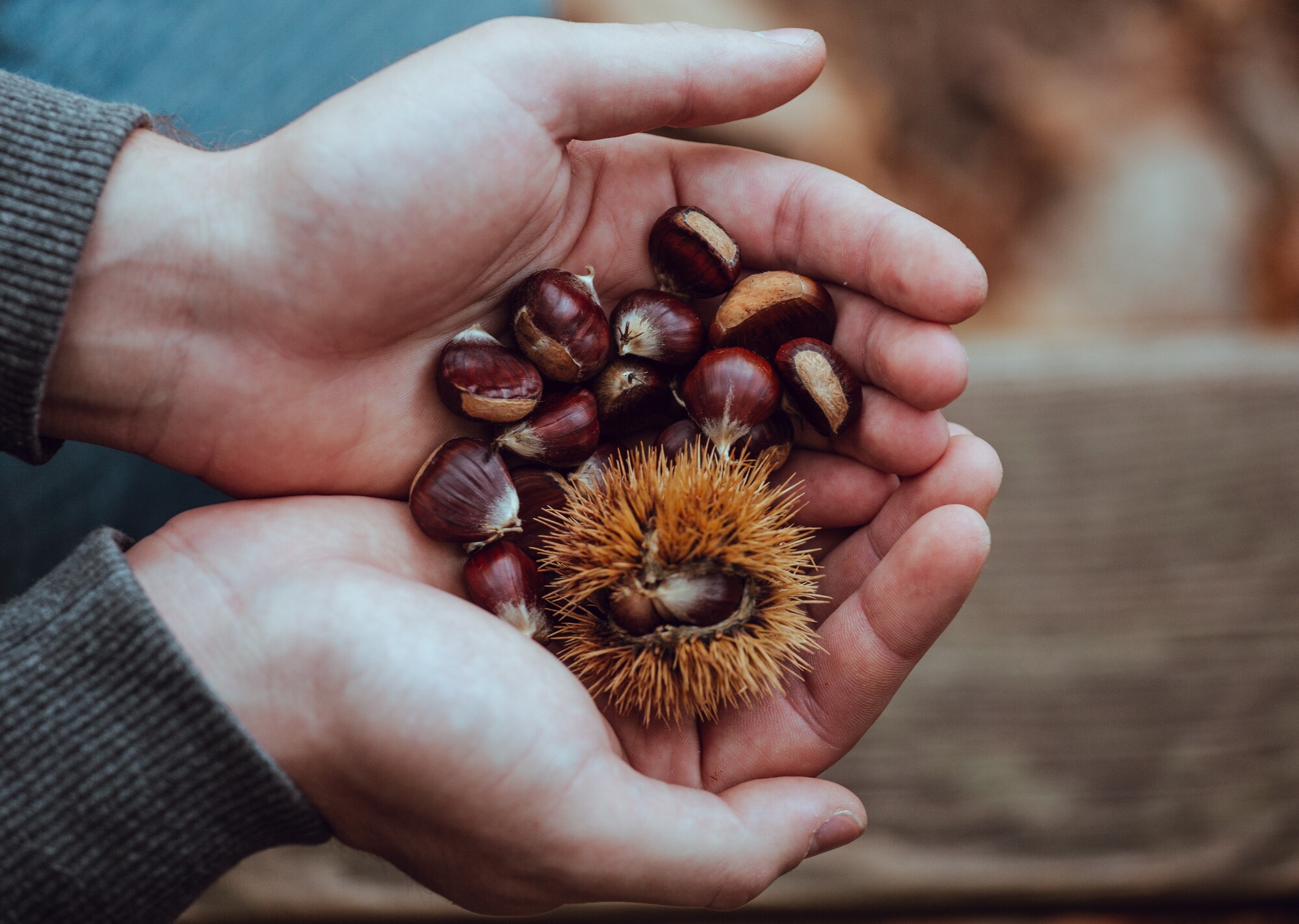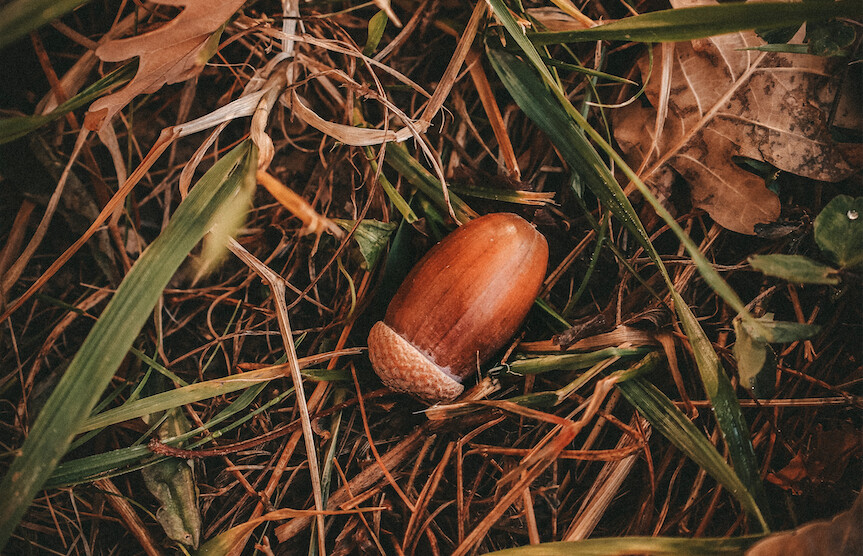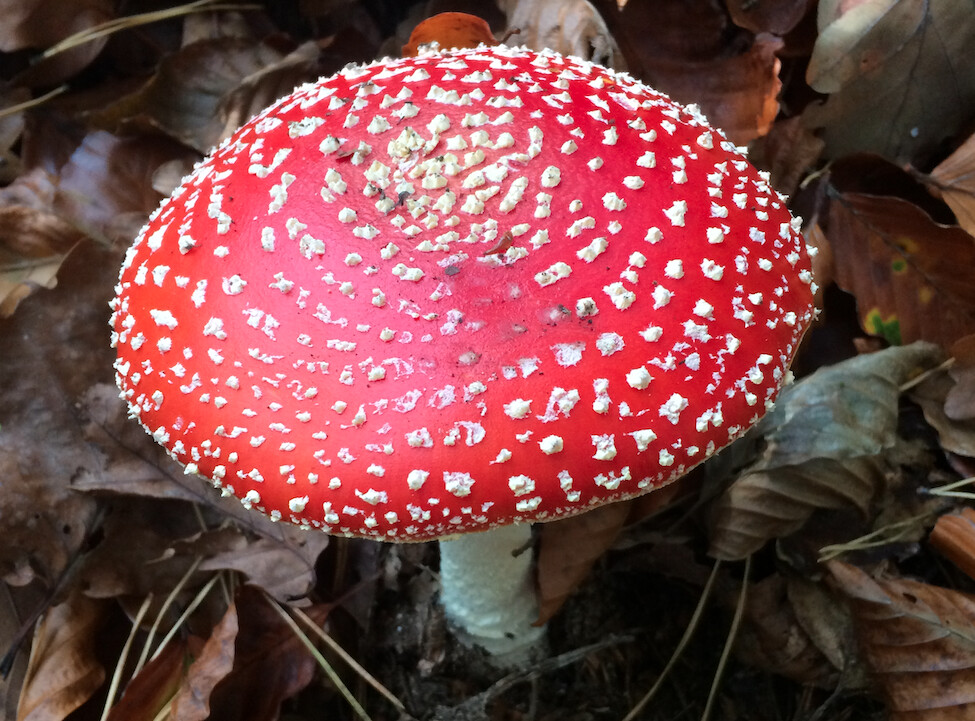Autumn, the season of vibrant colours and crisp air, is also a time of culinary wonders in the bountiful landscapes of Slovenia. Nature puts on a show, painting the world in hues of orange and gold while offering a delectable spread of wild foods. So let's dive into the Slovenian wilderness and take a peek at some of the things to look out for.
Mother Nature’s Bounty
Autumn foraging is a popular tradition in Slovenia, where nature provides a veritable treasure trove of edible delights. The country's rich and varied landscapes make it an ideal destination for those looking to immerse themselves in the art of wild food discovery.Chestnuts Roasting on Open Fires
Castanea sativa, or the sweet chestnut, are harvested from the ground, then roasted to perfection, bringing out their rich, nutty flavour and sweet aroma. Roasted chestnuts are a quintessential part of Slovenian Christmas celebrations, with vendors setting up stalls in town squares to sell these warm, comforting treats. Aside from roasting, chestnuts can be used in various ways. Add them to soups and stews, or puree them to use in desserts. They're a versatile ingredient, and bring a delightful texture and flavour to both savoury and sweet dishes.

Hunting for Acorns
Another little autumn treasure are acorns. Packed with nutrition these humble nuts are rich in healthy fats, fibre, and essential minerals. To savour their earthy goodness, roast them or grind them into a versatile acorn flour. You can find acorns beneath the mighty oak trees that blanket the Slovenian countryside. Once collected, they require soaking to remove the bitter tannins before use. As a vital part of local traditions, acorns offr a delightful glimpse into the intersection of culinary heritage and nature. So, in the crisp autumn air, venture out to gather these precious gems and fully enjoy the taste of the country.
Truffle foraging is a prized pursuit. These rare fungi, rich in umami flavour, are a culinary delicacy. Packed with antioxidants and nutrients, they add an exquisite touch to dishes. Due to their scarcity, truffles can be expensive, making each find a valuable treasure. As you explore Slovenia's woods, savour the thrill of the truffle hunt and the gastronomic rewards it brings.
Mushroom Season
Slovenia boasts a wide range of native mushroom species, some of which are sought-after for their culinary excellence, while others must be approached with caution due to their toxicity. So before embarking on a wild mushroom hunt, it's essential to be well-informed about the potentially dangerous varieties lurking amongst the edible ones.One of the most sought-after edible mushrooms in Slovenia is the Porcini (Boletus edulis). These robust fungi are known for their earthy, nutty flavour, making them a prized addition to a wide range of dishes. Porcini mushrooms are easily recognisable by their thick stem and a cap that ranges from brown to chestnut in colour. Another favourite is the Chanterelle mushroom and boasts a delicate apricot-like flavour and golden hue. Its popularity lies in its versatility and earthy charm, making it a delightful addition to a variety of culinary creations in the heart of autumn.
But beware, In Slovenia, the Amanita phalloides, or 'Death Cap', is the most poisonous mushroom and consuming it can lead to severe liver and kidney damage or even be fatal. The Death Cap boasts a white to greenish cap and stem, with a conspicuous ring on the upper stem. Other toxic mushrooms in Slovenia include the Amanita muscaria, with its distinctive cartoon toadstool appearance, and the False Chanterelle. Symptoms of mushroom poisoning can range from mild gastrointestinal distress to severe organ failure. If you suspect mushroom poisoning seek immediate medical attention.

Domestic animals can also be at risk. Dogs, in particular, are prone to eating wild mushrooms, so keep a close eye on them at all times. Another potential hazard to watch out for are Fire Salamanders, which you may start to see towards the end of summer and early autumn. These distinctive black and yellow amphibians thrive in the cool, damp forests of the country. They generally keep themselves to themselves, spending much of the day hidden before becoming more active in the evening and nighttime. But rainy days will bring them out, and they well camouflaged on an autumnal forest floor. As interesting as it is to see them whilst meandering through nature, keep a respectful distance because fire salamanders are toxic. If threatened, their skin secretes a potent neurotoxin, a potential danger to predators and curious humans and dogs.

Foraging in Slovenia isn't just about food, it's about connecting with nature, learning about the environment, and enjoying the wonders of the wilderness. Just remember the golden rule: when in doubt, leave it out, - especially when it comes to mushrooms, and always prioritise safety and responsible foraging. Foraging etiquette involves leaving no trace, refraining from damaging plants or habitats, and respecting the natural balance of the ecosystem. There are many groups and organisations that you can join and learn how to safely enjoy nature's bounty under the guidance of a local expert.





Comments